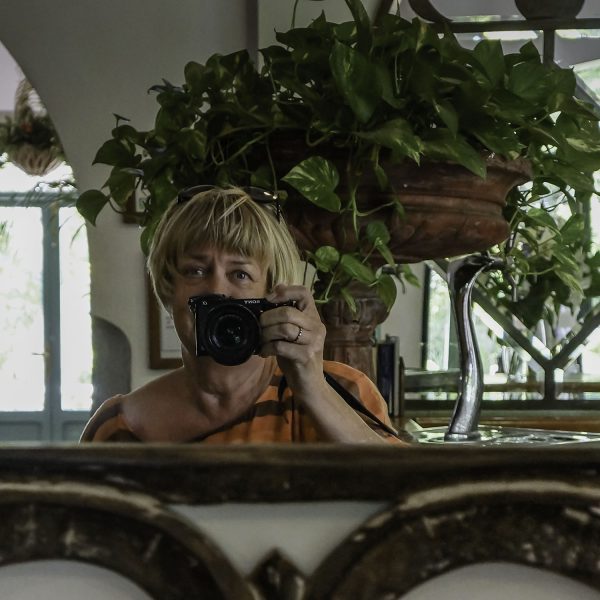I recently read an article by Katie Gibbons in the Times on the role that optimism plays in women’s health, and I just love this particular quote she cites from Eric Kim, research fellow at Harvard department of social and behavioural sciences.
“ It takes a toolbox of different things to be healthy and being optimistic is one of these tools”

Life goes on…here I am taking a selfie in Tarifa, Spain (with my good hand)! October 2016
Its almost 11 months since an artery in my brain burst, flooding the surrounding tissue with blood, destroying neurons … wreaking havoc.
I remain invested in how I experience the future, and I understand the importance of being proactive in finding support, reading and rooting out inspiration to fuel my recovery, but above of all remaining optimistic about the possibilities of neuroplasticity.
We don’t control what happens to us; we control how we respond.
Just writing this journal, describing my health struggles since my stroke, has helped me to understand possible outcomes and to remain stoic in light of the difficult situation I have found myself facing. Having an end in sight is no guarantee that I will make it, but not having an end in sight is a guarantee that I will not.
I have come to understand now, in a way that I never did prior to having a stroke, that if I am to see my grandchildren become young men, live to a ripe old age and enjoy an active retirement with my wonderful husband, I need to pay heed more than ever to what sustains and grows my brain health. I am learning how to live again but in a different way.
Anat Baniel teaches us in her program The Anat Baniel Method to celebrate every small step of progress, because small steps lead to big achievements. It’s very easy to slip into not making an effort, and there are lots of times when I don’t have the drive! Recovery from stroke takes a lot of hard work.
Since my last post (yes, yes, I am so sorry that its taken me so long to write this one), my gains in recovery seem much smaller, and then I realize that I am opening jars, turning bottle caps, chopping onions using 2 hands – in fact my left hand is becoming much more functional. Eating with a knife and fork is still an adventure though! Every so often, I catch myself, and think, hey look at that….. I just did it!
By engaging mental training more and more, improvements with my hand and arm, although minute and very slow, are occurring. I don’t find this (imagining) easy, but in doing so I am developing a greater awareness of my body and the quality of movement.
Thinking and doing are the same in the brain. In other words the same brain regions that are activated when completing a motor skill are activated when mentally rehearsing the same task.
When you mentally rehearse a movement, all but one of the brain regions that control your movements become active in the absence of movement.
After much research on the potential after effects of stroke in the thalamus, I feared that I was developing central pain. My physiatrist has now confirmed this diagnosis.
Post-stroke thalamic pain or central pain. is described well in the book The Body Has a Mind of its Own ~ Sandra Blakeslee and Matthew Blakeslee
“The pain can be moderate to excruciating, and its severity can wax and wane, but the most constant factor is an icy burning sensation like frostbite.
Half of those who suffer central pain after a stroke have damage to their thalamus, If they have damage to the right thalamus, they experience a loss of temperature sensation on the left side of their body along with intense burning pain, and vice versa. The cold sensory pathway is wiped out, and the right frontal insula is on fire.’
My haemorrhage was in the right side of the thalamus.
Pain has a very real purpose it protects you it alerts you to danger. In the case of central pain, no harmful stimulus causes the pain. Instead, injury to the sensory pathways within the brain stimulates central nerve fibres, thereby creating a response to what the brain judges to be a threatening situation. The nerves are just doing the wrong things, and responding to signals from the brain telling them that increased sensitivity is required.
Pain makes you move differently, think differently and behave differently. My pain is very real, but it is a product of my brain which is playing a very significant part. My hope is that with time and brain plasticity I will be in a better place in the future.
I am not an expert , I am just sharing my recovery from stroke, and some of my coping strategies, in the hope that they might help others who are also struggling.
Uncertainty is where things happen. It is where the opportunities — for success, for happiness, for really living — are waiting’. ~ Martha Nussbaum
